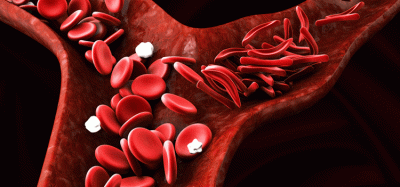Computer simulations predict the spread of HIV
Posted: 2 August 2018 | Dr Zara Kassam (Drug Target Review) | No comments yet
Genetic signatures trace the origin of infection and its potential path through populations, allowing state health departments to track the disease…


In a recent study, researchers at Los Alamos National Laboratory have shown that computer simulations can accurately predict the transmission of HIV across populations, which could aid in preventing the disease.
The simulations were consistent with actual DNA data obtained from a global public HIV database, developed and maintained by Los Alamos. The archive has more than 840,000 published HIV sequences for scientific research.
“We looked for special genetic patterns that we had seen in the simulations, and we can confirm that these patterns also hold for real data covering the entire epidemic,” said Thomas Leitner, a computational biologist at Los Alamos and lead author of the study.
Biomarkers aren’t just supporting drug discovery – they’re driving it
FREE market report
From smarter trials to faster insights, this report unpacks the science, strategy and real-world impact behind the next generation of precision therapies.
What you’ll unlock:
- How biomarkers are guiding dose selection and early efficacy decisions in complex trials
- Why multi-omics, liquid biopsy and digital tools are redefining the discovery process
- What makes lab data regulatory-ready and why alignment matters from day one
Explore how biomarkers are shaping early drug development
Access the full report – it’s free!
HIV is particularly interesting to study in this manner, Dr Leitner noted, as the virus mutates rapidly and constantly within each infected individual. The changing “genetic signatures” of its code provide a path that researchers can follow in determining the origin and timeframe of an infection, and the computer simulations are now proven to be successful in tracking and predicting the virus’s movements through populations.
The rapid mutational capability of the virus is useful for the epidemiological sleuthing, but also is one of the features that makes it so difficult to tackle with a vaccine.
Dr Leitner and Ethan Romero-Severson, the study’s co-author and a Los Alamos theoretical biologist, used phylogenetic methods, examining evolutionary relationships in the virus’s genetic code to evaluate how HIV is transmitted. They found that certain phylogenetic “family tree” patterns correlated to the DNA data from 955 pairs of people, in which the transmitter and recipient of the virus were known.
“These HIV transmissions had known linkage based on epidemiological information such as partner studies, mother-to-child transmission, pairs identified by contact tracing, and criminal cases,” the authors write.
The robust results from the study have led to a collaboration with Colorado and Michigan state health agencies. The researchers plan to develop public health computational tools to help the agencies to track the disease and allocate resources for targeted prevention campaigns. “We hope these tools will help to hinder new infections in the future,” said Dr Leitner.
Dr Leitner said the cutting-edge modelling tools can also be used to predict the patterns of other rapidly evolving infectious diseases.
The study has been published in the journal Nature Microbiology.
Related topics
Antiretroviral Therapies, Bioinformatics, Disease Research
Related conditions
HIV
Related people
Ethan Romero-Severson, Thomas Leitner







